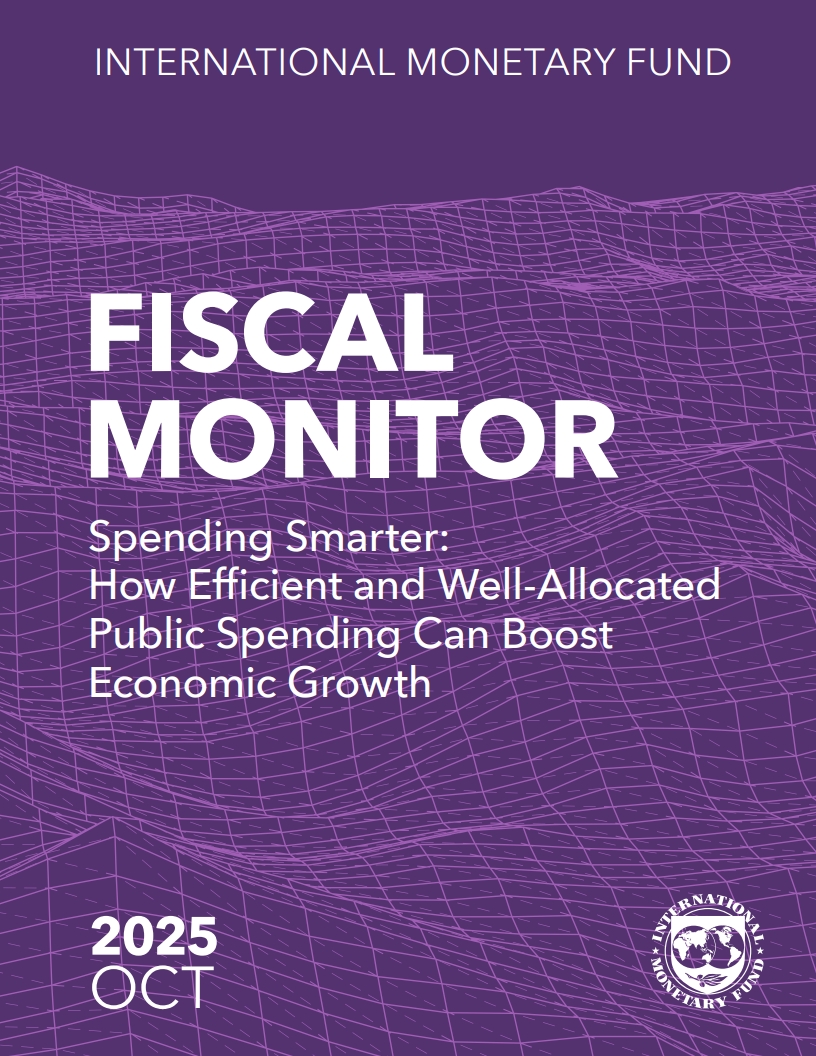
ㅇ IMF는 2029년 전세계 일반정부채무 비율이 GDP 대비 100%를 초과할 것으로 전망함
ㅇ 이는 1948년 이후 가장 높은 수준으로, 팬데믹 이전 예상보다 더 빠른 증가세를 반영한 수치임
ㅇ 일반정부채무(D2)는 중앙정부와 지방정부 채무에 비영리 공공기관 부채까지 포함한 광의의 정부 채무 개념임
ㅇ 해당 전망은 IMF·세계은행 연차총회를 앞두고 발표된 ‘재정점검보고서’(Fiscal Monitor)에 포함된 내용임
ㅇ IMF는 팬데믹 이후 재정 건전성에 대한 국제적 우려가 확대되고 있다고 분석함
□ 재정 부담 요인 확대
ㅇ 글로벌 금리 상승으로 부채 상환 비용이 증가해 예산에 부담이 가중되고 있음
ㅇ 금융자산 가치 상승과 시장 불안정성이 재정 안정성에 영향을 주고 있음
ㅇ 국방, 자연재해, 기술 변화, 인구 구조 변화, 개발 지출 등으로 재정 수요가 지속적으로 확대되고 있음
□ 미국의 재정 전망
ㅇ 미국의 GDP 대비 일반정부채무 비율은 2025년 125.0%에서 2029년 140.1%로 상승할 것으로 예상됨
ㅇ 같은 기간 총재정수지 비율은 -7.4%에서 -8.0% 사이 수준으로 유지될 전망임
ㅇ 선진국 37개국 중 가장 높은 재정적자 수준을 기록할 것으로 분석됨
ㅇ IMF는 미국 의회에 조속한 재정 조정 필요성을 제기함
□ 한국의 재정 전망
ㅇ 한국의 GDP 대비 일반정부채무 비율은 2025년 53.4%에서 2029년 62.7%로 상승할 것으로 전망됨
ㅇ 총재정수지 비율은 2025년 -1.5%에서 2029년 -1.2%로 점진적 개선세를 보일 것으로 예상됨
[출처] 'IMF '2029년 전세계 국가채무비율 100% 돌파'…1948년 이후 최고 (2025.10.16.) / 연합뉴스
목차
Assumptions and Conventions v
Further Information vi
Preface vii
Foreword viii
Executive Summary x
Chapter 1. Spending Smarter: How Efficient and Well-Allocated Public Spending
Can Boost Economic Growth 1
Introduction 1
Developments in Public Spending 2
Determinants of Public Spending 8
Lessons from Country Reform Efforts 9
Output Dividends from Expenditure Reforms 11
Policies for Efficient, Pro-Growth Public Spending 16
References 21
Economy Abbreviations 25
Glossary 27
Methodological and Statistical Appendix 33
Data and Conventions 33
Fiscal Policy Assumptions 36
Definition and Coverage of Fiscal Data 41
Table A. Economy Groupings 41
Table B. Advanced Economies: Definition and Coverage of Fiscal Monitor Data 45
Table C. Emerging Market and Middle-Income Economies: Definition and Coverage of Fiscal Monitor Data 46
Table D. Low-Income Developing Countries: Definition and Coverage of Fiscal Monitor Data 47
List of Tables
Advanced Economies (A1–A8) 48
Emerging Market and Middle-Income Economies (A9–A16) 56
Low-Income Developing Countries (A17–A22) 64
Structural Fiscal Indicators (A23–A25) 70
Selected Topics 73
IMF Executive Board Discussion of the Outlook, September 2025 89
Boxes
1.1. Spending Reviews: Impact and Best Practices 19
1.2. Public Investment and Firm Productivity 20
Figures
Figure 1.1. Developments in Public Spending 3
Figure 1.2. Gaps in Efficiency of Public Spending by Country Group 6
Figure 1.3. Gaps in Efficiency of Public Spending over Time 7
Figure 1.4. Drivers of Public Spending Developments 9
Figure 1.5. Impact of Pro-Growth Spending 13
Figure 1.6. Long-Term Gains in Output 15
Figure 1.1.1. Impact of Spending Reviews on Public Wages and Efficiency 19
Figure 1.2.1. Impacts of Reallocation toward Public Investment 20
Online-Only Annexes
Online Annex 1.1. Datasets for Public Spending
Online Annex 1.2. Public Spending Efficiency Gap Estimates
Online Annex 1.3. Public Spending Rigidity Estimates
Online Annex 1.4. Methodology for Identifying Determinants of Public Spending Developments Online Annex
1.5. Empirical Methodology for Growth Regressions
Online Annex 1.6. Theoretical Model of Public Spending
해시태그
관련자료
AI 100자 요약·번역서비스
인공지능이 자동으로 요약·번역한 내용입니다.
FISCAL MONITOR : Spending Smarter: How Efficient and Well-Allocated Public Spending Can Boost Economic Growth
(재정점검보고서: 보다 현명한 지출: 효율적이고 전략적으로 배분된 공공지출이 경제성장을 촉진하는 방법)



